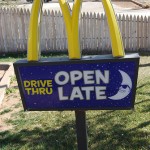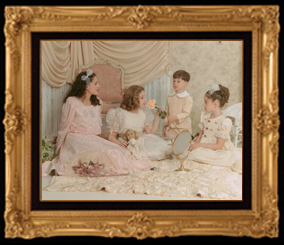One of the top ten reasons small businesses fail, especially retailers, is due to poor location. Any great location, that is, one with very high traffic, is going to cost a lot of money. Why? Because your sales will be higher just due to proximity. Ray Croc who was the founder of McDonald’s used to say, “I’m not in the burger business, I’m in the real estate business”.
Translation? His sales were directly related to where he was selling, not what he was selling. His product line had to be decent, but the location was everything.
That surprised me, until I paid closer attention to where every McDonald’s is located. They have the premier position at every truck stop on every main highway in the U.S.
Another highly successful business owner that understood the value of location was Estee Lauder. When Lauder was growing her business, she would bargain hard to get the cosmetic counter that was nearest the escalators at every major department store in the U.S. It virtually guaranteed her a certain level of sales.
When I was in the cosmetics business, a thousand years ago, the buyers would shift the cosmetic company counters around on the selling floor. If you went from a great location to the back of the store, your sales fell off a cliff. It became hand to hand combat for the high traffic spaces.
Most retail small businesses fail because they choose a location that is cheap to conserve cash. Meet my friend Theresa. She opened a shop to sell women’s dresses on a side street in an elegant Connecticut town. The rent was cheap, so she took the space. No one ever stopped by the shop. She sent out mailers, she practically stood naked in the middle of the street to attract attention, but soon, the shop had to close. She and her partner just couldn’t afford the rent. Her expenses were relatively high for her revenues. She couldn’t make ends meet, let alone show a profit.
Meet Denise. She’s a photographer in the Midwest and she owns Precious Pictures.com. She takes gorgeous photographs that should be hanging in the Metropolitan Museum of Art.
She always wanted a photography studio on a busy street in her hometown. Currently, she works from her studio at home. It’s a gorgeous studio, by the way. She had it custom built so her photos look very professional. The photograph to the right is called “Victorian Afternoon”. The children in it were not professional models.
In fact, her studio is the entire footprint of her home. She doesn’t realize if she rented professional space, her revenues would probably increase, but not enough to make it worth her while. She can make twice the money with half the effort. If she wants to pick up some extra cash, she can become a subcontractor to the studio that has all that fixed overhead. She doesn’t have to do any follow up with the customers. She doesn’t have to coordinate with the lab for prints or the framers for finishing. She can get paid and go home without the headaches after a good day’s shoot.
How can you avoid this top ten reasons small businesses fail trap? Build your revenues on a wholesale basis first where you don’t need expensive space and location. Your gross margins will be lower, but your revenue volume will be far higher and your fixed overhead will be lower; much lower. As a wholesaler, you don’t have to worry about collecting sales tax, hiring tons of staff or what the weather is doing to keep customers away.
Prove there’s demand for your product as a wholesaler first. That’s what J. Peterman did. Then he expanded his retail stores and his product line way too fast.
It looks great to have your name on the awning outside, but put your ego on ice for a while. Work on a wholesale basis first to build your cash position. That becomes your buffer against changes in the economic climate.
One of the top ten reasons small businesses fail is because of poor location. So don’t look for a location. Run the business as a wholesaler until you have the revenue stream can handle more fixed overhead like a rent or a mortgage.




